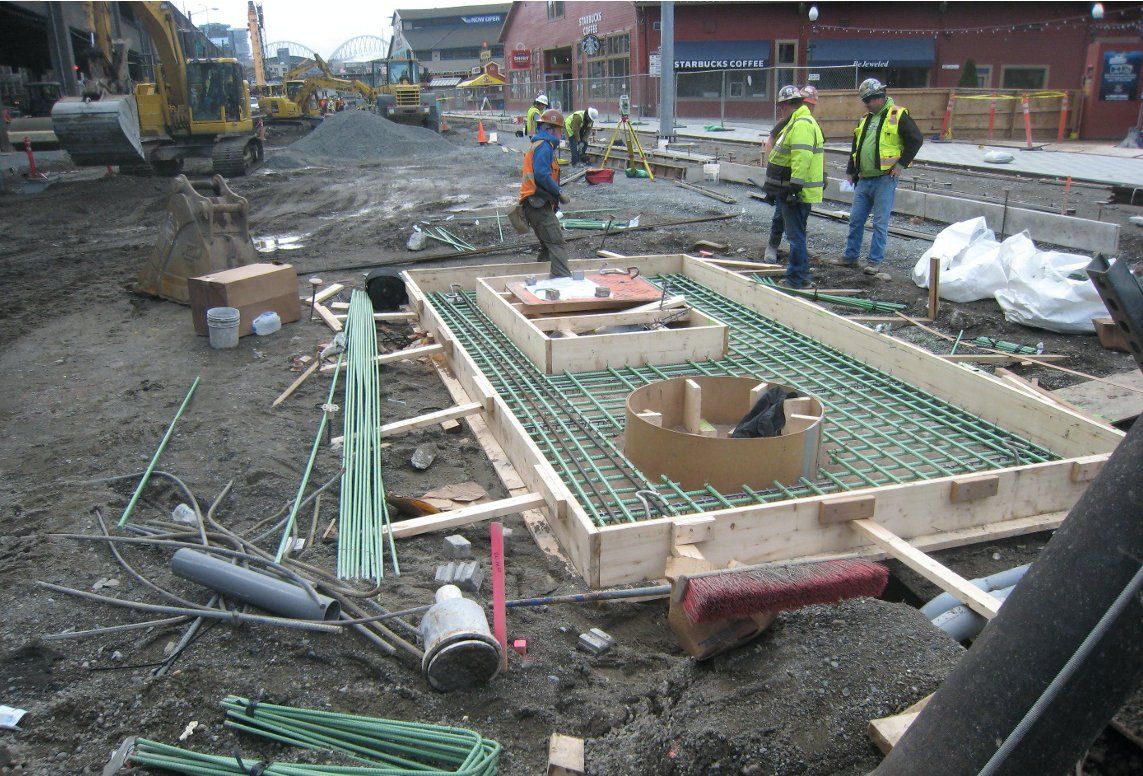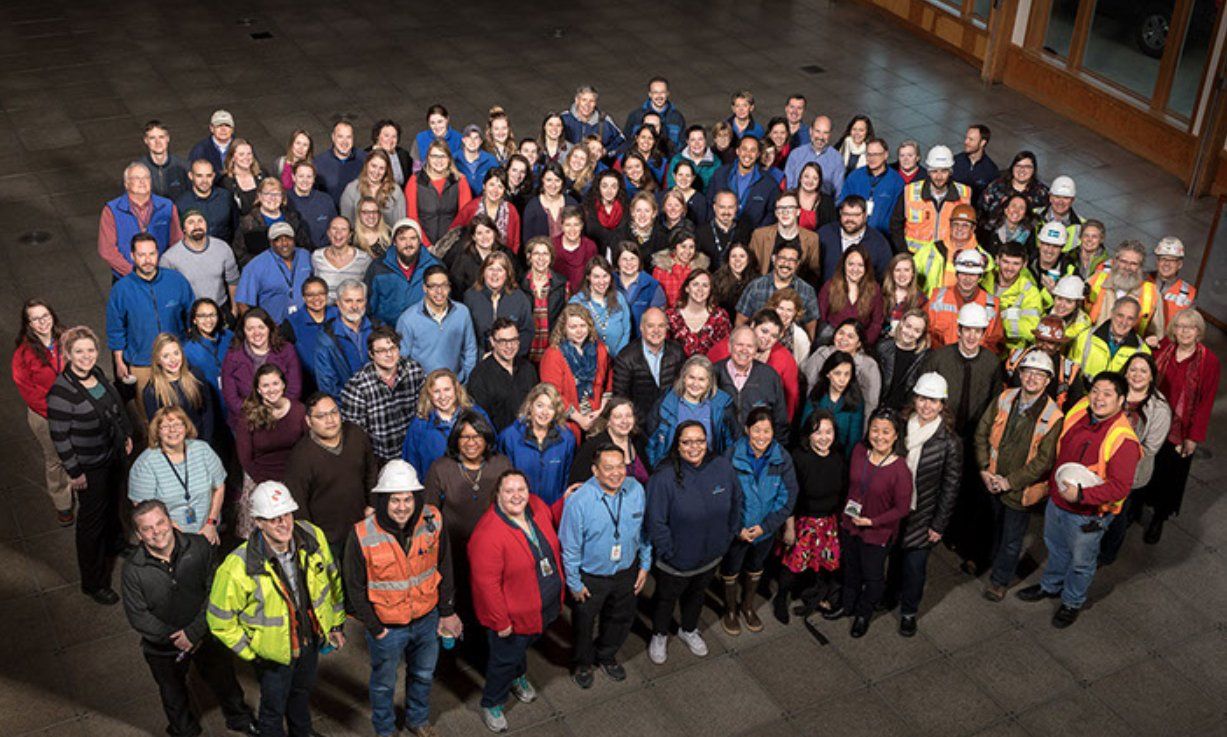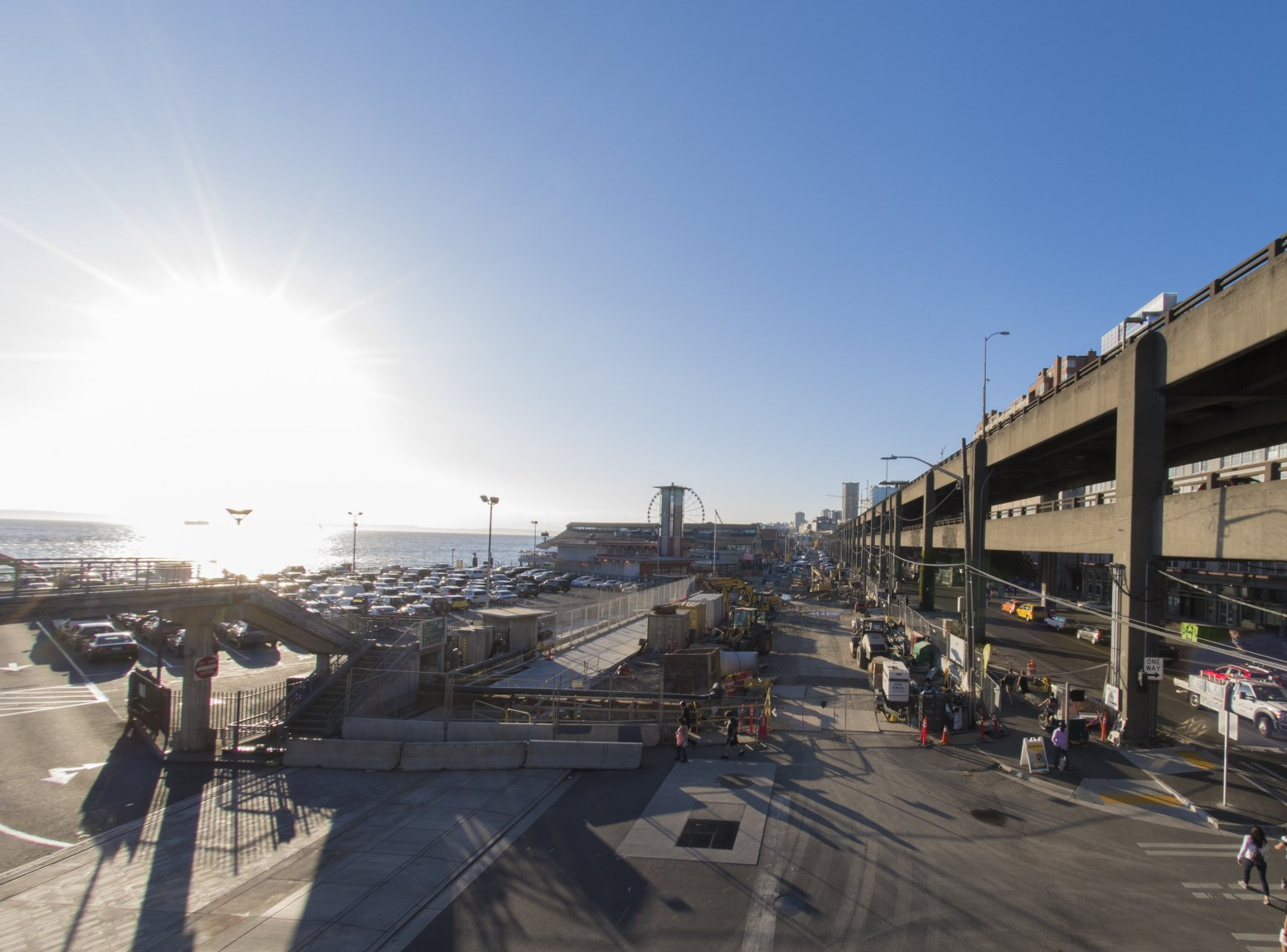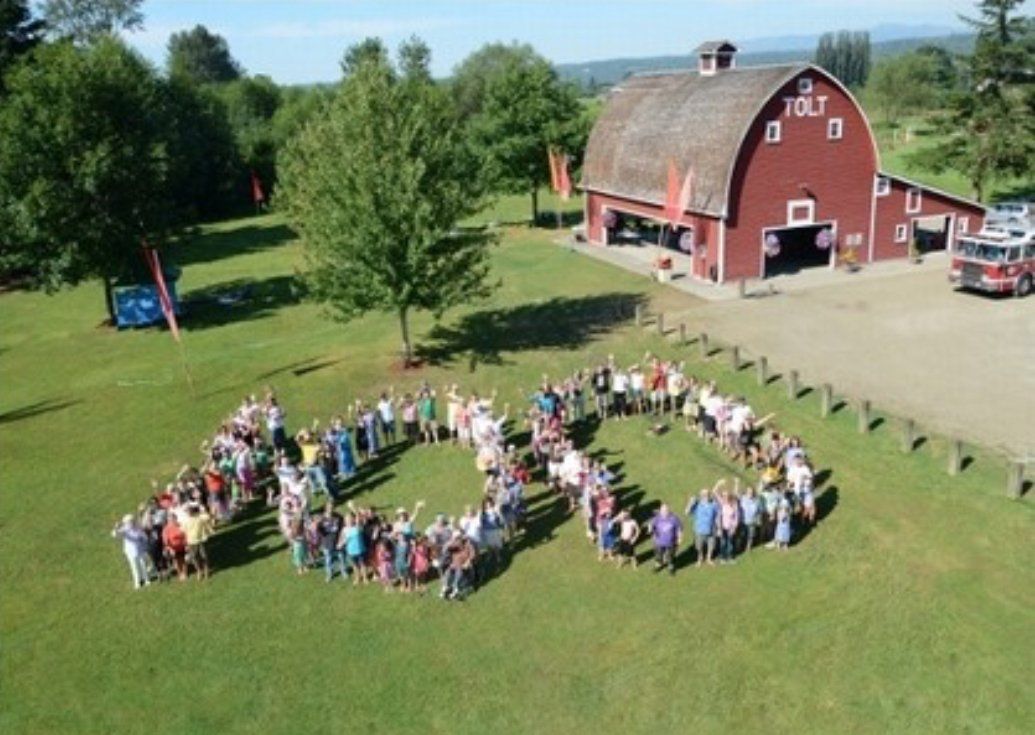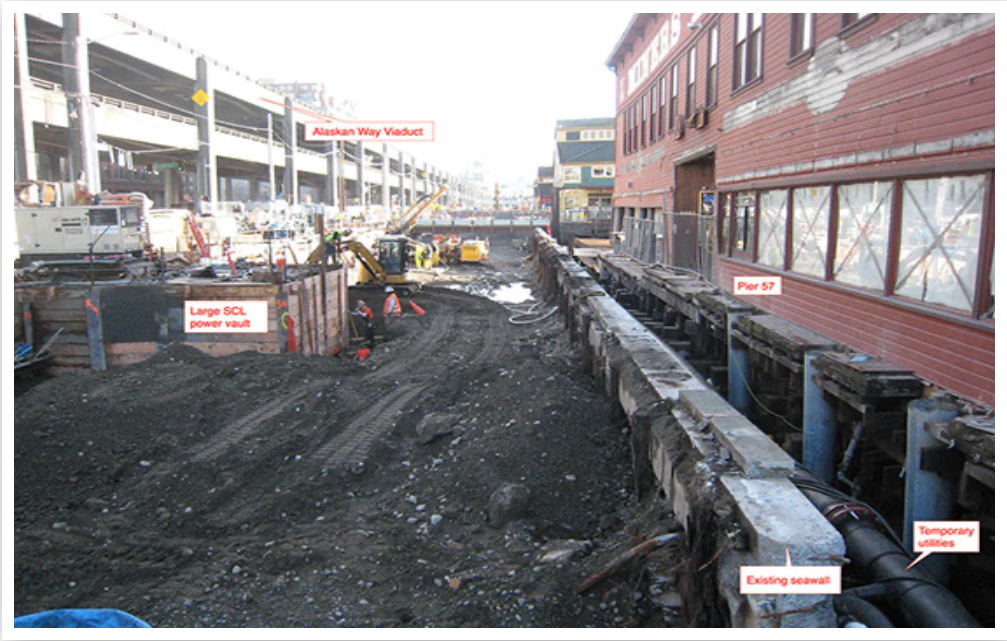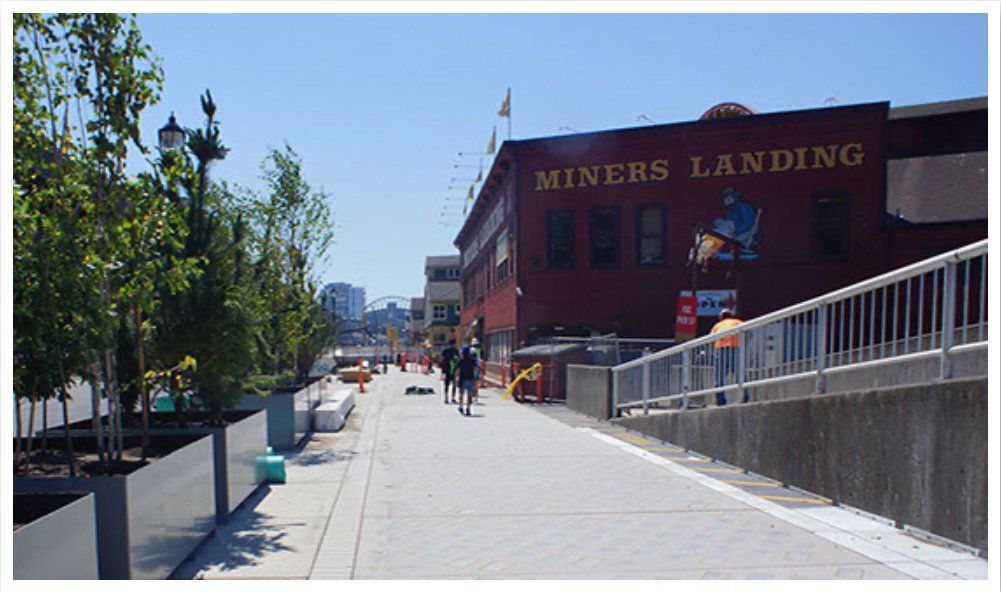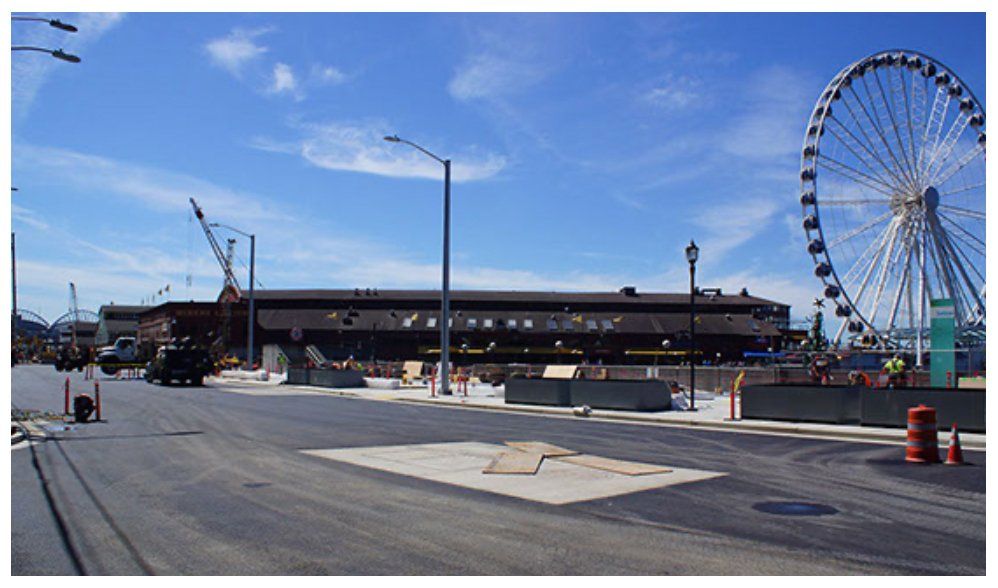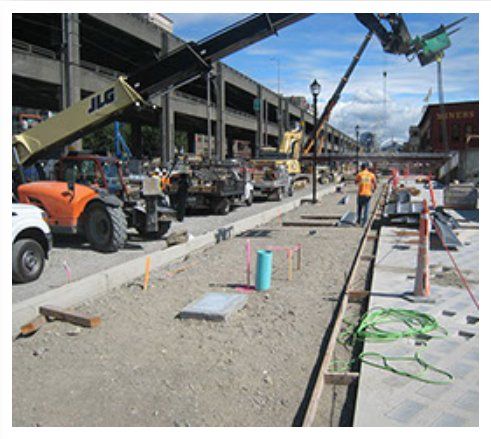Elliott Bay Seattle Seawall Project Diary
WINTER 2013/14
Heading off construction delay with a kayak

Here’s a bit of an update and a few thoughts on some of the seawall utility coordination. The Elliott Bay Seawall Project (EBSP) is a very complex piece of construction with the most challenging schedule I’ve been involved with in over twenty-five years of work in infrastructure development. During the value-engineering phase of the project, utility-related delay was identified as a primary schedule risk.
When it comes to avoiding unplanned utility-related delay and cost, of course, the big pipes and conduits get the most attention first because they are obvious and usually seem to pose the biggest concerns. For example, the major pipes providing water supply for fire protection are easy to spot and to protect or relocate. So is the power supply to the fire pumps and main electrical panel. But it’s not just the big stuff that matters. How about that little conduit with the telemetry wire that actually turns on the fire pumps? If it’s simply yanked out during demolition, there goes the fire protection.
So, although the major utility elements were dealt with during design, the next step, as EBSP demolition begins, is to identify and track down all of the existing wires, cables, pipes and conduits running along – often attached to – the seawall itself. There’s a spider’s web of this stuff that belongs to either the utility agencies and purveyors or to the private property owners along the waterfront.
The first step is a painstaking visual inspection from the water side when the tide is right (kayaking skills necessary), documenting with notes, photos and video. One thing is for sure, when you can’t see the ends of the conduit or pipe, you can’t tell if it’s empty. Sometimes there’s an open junction box or conduit. Empty conduits go in the “easy” column. When there is a wire, or many wires, we have to track things down. So, I’m paddling along under piers, opening handholes and vaults, looking in electrical rooms and reviewing old designs and as-builts. It can be some relatively intensive detective work to figure out what everything is and then what should happen with it during construction and beyond.

It’s a particular challenge when these bits and pieces run from private property into the right of way then back onto private property. Everything like that has to relocate to accommodate the excavation and structure for the new seawall. This means finding not just the property owner but maybe also their building superintendent, plumber, electrician, IT expert – the list goes on. For old commercial properties, records may be poor or nonexistent and distant memory the only point of reference.
The purpose behind all this meticulous work is to do what’s reasonably possible within the constraint of the utility coordination budget to prevent delays in construction. Taking care of what appear to be insignificant utility details in advance is a small investment compared to the real-time cost of a construction crew grinding to a standstill while it waits for answers and action. A day’s time on this project costs somewhere in the range of $30,000 – it’s not pocket change. What’s worse, the construction windows are so utterly tight that even a brief disruption at the wrong time could mean missing a critical path completion milestone. This all falls squarely into the pay me now or pay me later category.

SHARE
COMMENT
